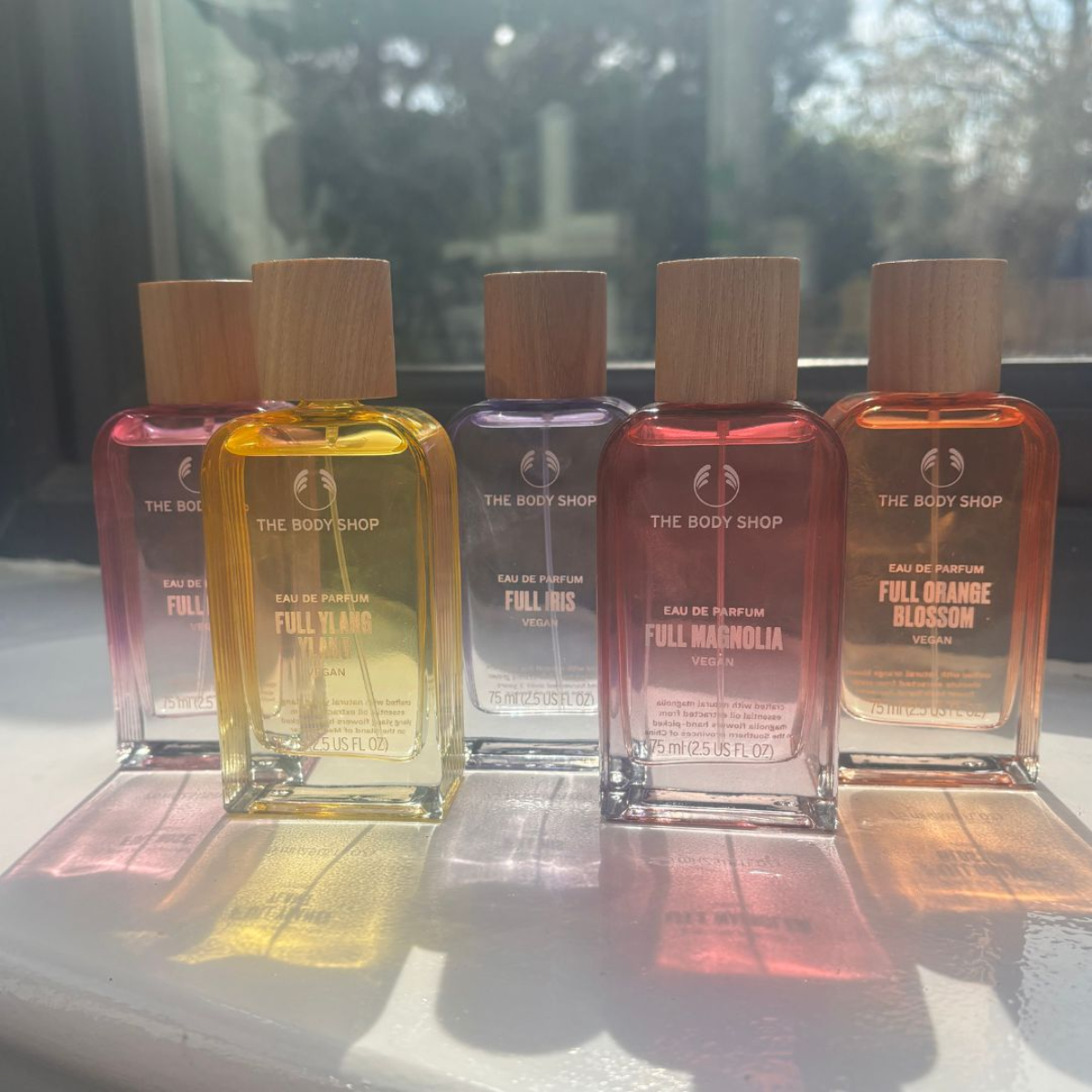These are the 5 top tips for SEO you need to know, according to an expert
In partnership with GoDaddy

Wondering what it is you should be doing to keep your content high and performing? We caught up with SEO-expert Caroline Revell to find out *exactly* what you need to do to succeed…
If you’re a small business owner, it’s most likely you have a website and are familiar with the importance of ranking. (If you don’t have a website then you should have, and GoDaddy can help, but we’ll come on to that later). Location on Google search engine result pages (SERPs) is everything.
The spot you want is the top – the higher you get, the higher your traffic – and vying for one of the rated positions doesn’t come without effort and some clever tactics. What’s more, to keep you on your toes, Google regularly makes changes to its algorithms, so to stay fresh and relevant you need to keep clued up on what you know about SEO.
Say hello to Caroline Revell. She’s been with GoDaddy since 2021 as an SEO whiz; a specialist responsible for ensuring guidance and best practice. She knows her stuff when it comes to SEO and takes great interest in supporting small businesses with limited budgets and precious time; her mission is to turn things around for these folk and get them back at the top of their game, and as far to the top of Google as possible. Here, she shares her top SEO must-knows for boosting rank.

1. Content is key
First things first, get the basics right. Your content needs to be reflective of your business and goals, whilst being rich and high-quality. It needs to be valuable to anyone who visits your site. “After choosing a focus keyword for your page, put yourself in your reader’s shoes,” says Caroline. “What would you expect to see?” Are you writing an e-commerce product description or a blog post? It needs to be reflective and in keeping with the overall business. “Stay focussed on your business goals,” says Caroline. “If your goal is to sell your incredible handmade brownies, there’s little point writing about puppy care, unless you love the joy of writing.” It’s all about making sure your content is valuable and has the attributes that your audience will expect.
Caroline advises paying attention to content frequency, too. “New content tells the search engines your site’s still alive and shouldn’t be pushed down the rankings,” she explains. “Competitor research will tell you whether you need to publish or refresh your content weekly or monthly. If stuck for ideas make your existing content even more fabulous and click republish.”
And when it comes to links, Caroline thinks they’re a good idea. “In Google’s eyes, links from other sites to yours are a vote of confidence,” she explains. “Showcase content, products and services that other sites will want to link to for the benefit of their visitors.” Though only reach out to other sites only if there is a natural fit to avoid a Google penalty, Caroline advises.

Credit: Getty
2. Smart keywords
“Keywords are still essential and the backbone of SEO,” Caroline says. “Crawlers search through your site’s content, word by word, looking for a match to the search query.” It’s all in the strength of the keywords and written content. “Despite the hype around AI, search engine crawlers are not yet smart enough to interpret your business offerings from your website’s look and feel. So you need to include the words and phrases your customers are typing into search engines to ensure your business doesn’t miss out.”
Google’s keyword planner tool within its advertising platform is widely used for keyword research.It’s free to use and provides ideas for keywords you may have missed including search volume .“A wholefoods wholesaler without the phrase ‘cash and carry’ could be missing a large share of the market if most people search for ‘cash and carry’,” guides Caroline. “Although crawlers may be starting to understand the relationship between terms such as handcrafted and bespoke or doughnut and pastry, don’t rely on it.”
3. Speed matters
People want quality results, and quickly. “Google confirmed* 53% of visitors will leave a site if loading time is greater than three seconds,” reveals Caroline. “Site speed will also make or break your conversions.” So how can you hurry things along? “Compress images, as these slow pages down by as much as 70% and cause visitors to leave your site before they have a chance to browse or buy. Faster load times are also part of Google’s ranking signal. More speed equals more traffic, which in turn gives you more conversions.”
4. Perfect meta descriptions
Well-crafted metadata has always been important and should not be overlooked. “Google now rewrites 70% of all meta descriptions,” says Caroline, “and they’re not always better than yours!” You need to keep checking and ensure your meta descriptions are accurate and performing well. “Badly crafted meta descriptions from Google can lead to lower click rates and less traffic.”
Avoid rewrites by writing a concise summary of your landing page which includes the search query, explains Caroline, as Google tends to rewrite these meta descriptions when it feels the summary it finds on the page does not include the search query. Keeping everything correctly written behind the scenes goes a long way to help with your overall site performance. Your URL structure, too, should be considered. “Keep it human-friendly,” says Caroline, “and short. Include the main keyword for the page where possible and avoid unreadable IDs.”
5. Mobile first
Good site experience for your audience is invaluable, and that includes giving them the option to browse your website on devices other than a desktop. So pay attention to how your site looks and feels on mobile platforms. “Crucial for users, crucial for Google’s core web vitals, yet few business owners check their own sites for fear of what they’ll find,” says Caroline. “Don’t be scared. If your site loads fast (different networks can affect mobile site speed), you can read the font, you can click on everything you want to, there’s nothing floating around on the screen getting in the way, you can reach the sign-up form or shopping cart easily and there’s nothing else making you uncomfortable other than design (Google can’t yet tell a good design from a bad one), then in all probability you’ve got all the basics covered.”
To find out more on how to ensure SEO best practice, check out the following at-a-glance guide. Plus, for all the help you need on creating your own business website, head over to godaddy.com.en-uk
Marie Claire Newsletter
Celebrity news, beauty, fashion advice, and fascinating features, delivered straight to your inbox!
-
 The viral 75 Medium challenge claims to be a friendlier alternative to the 75 Hard. So what do experts reckon?
The viral 75 Medium challenge claims to be a friendlier alternative to the 75 Hard. So what do experts reckon?Restrictive or effective?
By Katie Sims
-
 This is, without question, the best brow lamination-style gel I've ever used—and it rakes in compliments
This is, without question, the best brow lamination-style gel I've ever used—and it rakes in complimentsIf you like a lasting brushed-up brow look, you need this
By Lucy Abbersteen
-
 This new floral perfume collection is crying out for sunny weather—I can’t believe they’re all this good and under £45
This new floral perfume collection is crying out for sunny weather—I can’t believe they’re all this good and under £45Luxury notes on a budget
By Matilda Stanley
-
 How to manage skin changes during perimenopause and menopause, according to an expert
How to manage skin changes during perimenopause and menopause, according to an expertIn partnership with Vichy
By Alice Barraclough
-
 5 easy ways to eat a more plant-based diet, according to chef Bettina Campolucci Bordi
5 easy ways to eat a more plant-based diet, according to chef Bettina Campolucci BordiBy Niamh McCollum
-
 Give your home a new season glow-up with the latest autumn-winter collection from M&S
Give your home a new season glow-up with the latest autumn-winter collection from M&SPromotional feature with M&S
By Lizzie Hudson
-
 Here's how to maintain a pristine outdoor space
Here's how to maintain a pristine outdoor spaceIn partnership with Kärcher
By Marie Claire
-
 5 eco-conscious questions to ask yourself before buying something new
5 eco-conscious questions to ask yourself before buying something newBy Niamh McCollum
-
 How I want to help elevate the profile of women in cycling
How I want to help elevate the profile of women in cyclingKeira McVitty on recovering from illness, YouTube and why cycling is a sport that keeps on giving
By Marie Claire
-
 These are the key ways to go from passion to profit, straight from an expert
These are the key ways to go from passion to profit, straight from an expertIn partnership with GoDaddy
By Kate McCusker
-
 Why cycling is more than a hobby – it protects my family’s health
Why cycling is more than a hobby – it protects my family’s healthIn partnership with SKODA
By Marie Claire
